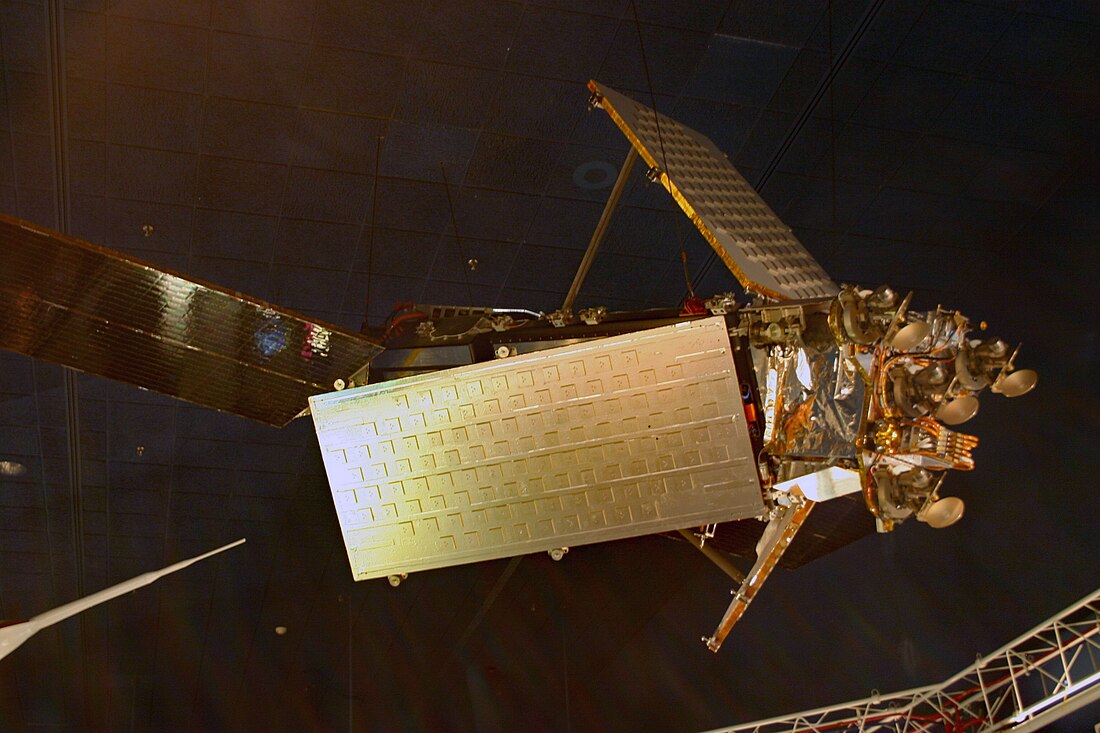Top Qs
Timeline
Chat
Perspective
Iridium 33
Communications satellite operated by Iridium Communications From Wikipedia, the free encyclopedia
Remove ads
Iridium 33 was a communications satellite launched by Russia for Iridium Communications. It was launched into low Earth orbit from Site 81/23 at the Baikonur Cosmodrome at 01:36 UTC on 14 September 1997, by a Proton-K rocket with a Block DM2 upper stage.[2][3] The launch was arranged by International Launch Services (ILS). It was operated in Plane 3 of the Iridium satellite constellation, with an ascending node of 230.9°.[2]
Remove ads
Mission
Iridium 33 was part of a commercial communications network consisting of a constellation of 66 LEO spacecraft. The system uses L-Band to provide global communications services through portable handsets. Commercial service began in 1998. The system employs ground stations with a master control complex in Landsdowne, Virginia, a backup in Italy, and a third engineering center in Chandler, Arizona.[4]
Remove ads
Spacecraft
The spacecraft was 3-axis stabilized, with a hydrazine propulsion system. It had 2 solar panels with 1-axis articulation. The system employed L-Band using FDMA/TDMA to provide voice at 4.8 kbit/s and data at 2400 bit/s with a 16 dB margin. Each satellite had 48 spot beams for Earth coverage and used Ka-Band for crosslinks and ground commanding.[4]
Destruction
On 10 February 2009, at 16:56 UTC, at about 800 km altitude, Kosmos 2251 (1993-036A) (a derelict Strela satellite) and Iridium 33 collided, resulting in the destruction of both spacecraft.[5] NASA reported that a large amount of space debris was produced by the collision, i.e. 1347 debris for Kosmos 2251 and 528 for Iridium 33.[6][7][8][9]
See also
References
Wikiwand - on
Seamless Wikipedia browsing. On steroids.
Remove ads

